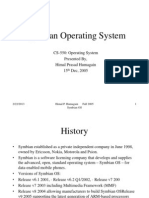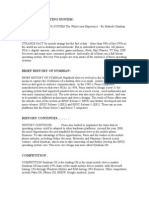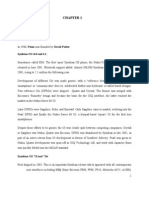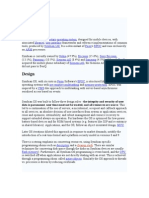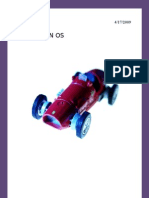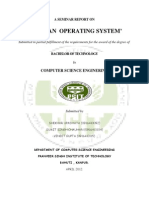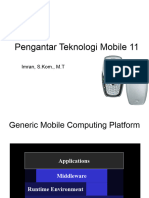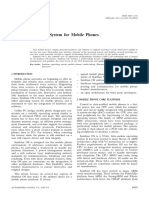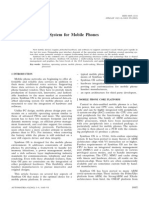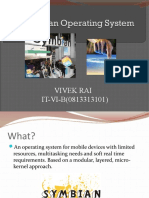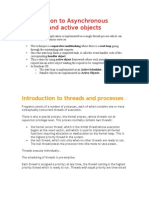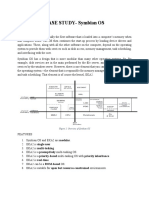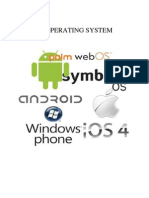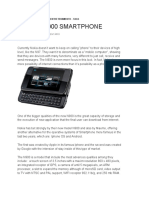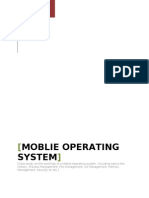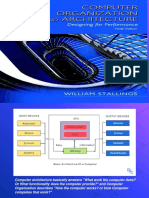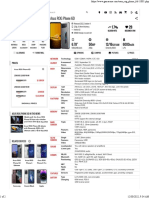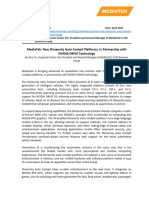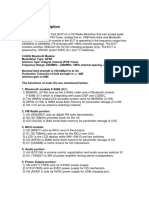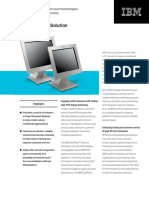History System Call Procedure Process Management and User Properties
of Symbian OS. HISTORY. Symbian was an operating system for mobile
phones made for smartphones. Symbian was initially created as an OS for
PDAs in 1998 by Symbian Ltd. Symbian OS runs basically on ARM
processors but an x86 port also existed, but it was never released.
Symbian was utilized by many cell phone brands as Samsung, Motorola,
Sony, Ericsson, Nokia, Fujitsu, Sharp, and Mitsubishi. At the end of 2010,
it was the most popular smartphone OS but it was overtaken by Android.
The last update for the Symbian OS was Nokia Belle. Feature Pack 2
release on October 2nd, 2017 It is written in C Symbian OS v6 0 and 6 1.
This was the first version of its series. This was released in 2001 and was
first used in Nokia 9210 communicator. And almost 500 000 Symbian
phones were shipped in the year 2001 and the following year that number
increased to a massive 2.1 million phones. Symbian OS 7 0 and 7 0s.
This version was released in 2003. This version was used by Nokia,
Motorola, Sony, Ericson and FOMA phones in Japan. One million
Symbian phones were shipped in the first quarter of 2003 with the rate
increasing to one million per month by the end of 2003 Symbian OS 8 0
and 8 1.
This version was released in 2004. Its most significant advantage was the
choice of two different kernels either EKA1 or EKA2 However EKA2
shipped a bit later than EKA1 EKA1 was used my some of the
manufacturers to make it compatible with the devices which used old
device drivers. Both the kernels looked almost identical in use but they
were different internally. Symbian OS 9 0 and 9 1. Both of these versions
did some back end improvements not visible to the user 9 0 was the final
version for EKA1 Symbian OS 9 1 was released in 2005. Major
improvements made in this system were security improvements but there
were quite a lot of bugs in this version. Symbian OS 9 2 9 3 and 9 5.
These versions improved memory management WIFI support and
language support. Application launch up speed was said to be 75 much
faster. Nokia Belle, Symbian OS 10 1 Released on 24 August 2011 this
was considered the last update for Symbian. It added improvements to
the UI through pull-down status notification bar near field communication.
NFC resizable home screen and widget support SYSTEM CALL. The
System Calls process is dealt with the aid of active objects. The
developers noticed that the weight of the threads which were currently
waiting for the call in the ready queue affected all the other threads in the
system.
The active objects allow the OS to handle the system calls rather than the
process handling it itself. This is done using a single scheduler. The
process of system call happens in a way that active objects signals OS
and suspends itself. When the system call completes the suspended
�process is woken up and it executes as function had returned with the
data. The active object can't call a function directly and expect a return
value. It must call a special function that sets up the system call and
returns immediately PROCESS MANAGEMENT. The objective of any
scheduling strategy is to expand CPU utilization and throughput while
limiting turnaround time waiting time and response time Symbian OS is a
real-time system and it utilizes a static monotonic scheduling strategy
augmented by time slices. Monotonic Scheduling It arranges forms with
the briefest due time first and the presentation of time cuts implies that
procedures with a similar due time or no due time can be assigned time
cuts and scheduling utilizing a priority scheduling scheme. There are 64
levels of priority in Symbian OS. A key to soft real-time performance is
predictable execution time. There are several important characteristics
that must be predictable including Latency times an important benchmark
is a latency of handling interrupts. The time from an interrupt to a user
thread and from an interrupt to a kernel thread. The time to move threads
between queues and the CPU Manipulating scheduling queues. For
example, moving processes to and from the ready queue must be
bounded. The time to get information about processes. For example the
time it takes to find the highest priority thread in the ready state USER
PROPERTIES. Every operating system provides several features and
specific characteristics from which the user can benefit and facilitate him/
her.
These properties are called user properties They help the consumer or
the user in performing the task efficiently and quickly and in turn it saves
the user's time because the user does not have to wait needlessly for
these jobs to complete so all in all it benefits the user. Several user
properties that the Symbian OS provides to its users are Batch
processing, Spooling Interactivity, Multitasking, Real-Time System,
Multiprogramming, Distributed Environment.

